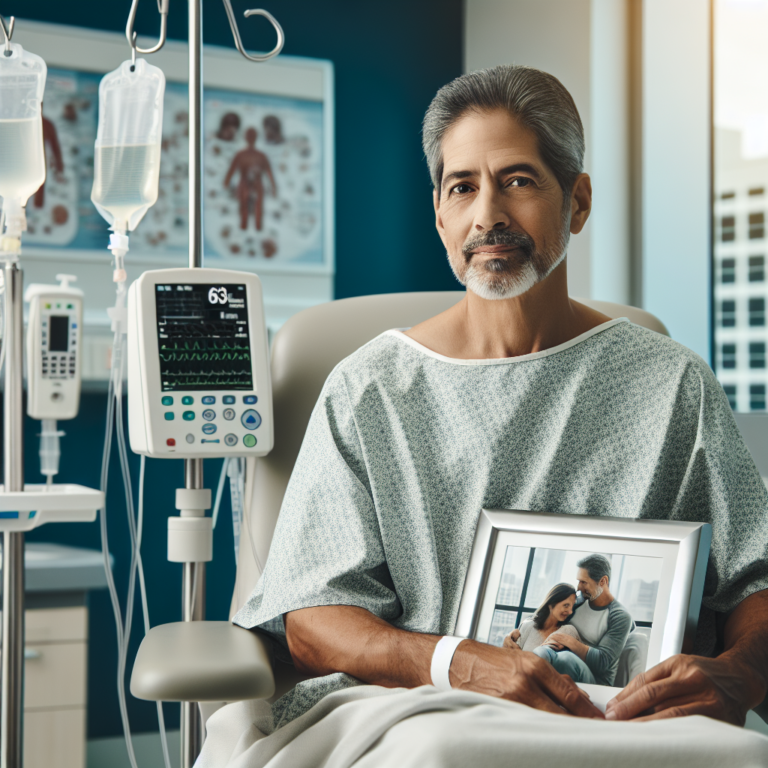Stay Alert: How Vigilance in Symptom Tracking Can Ensure Early Diagnosis
In late November 2021, Jay Buth noticed alarming changes in his health when his urine turned dark over a few days, signaling a potential problem. By the fourth day, he observed a yellowing of his skin and eyes, prompting a visit to Urgent Care. There, he was swiftly directed to the Emergency Room, where doctors diagnosed him with jaundice—a serious condition that ultimately led to the discovery of his pancreatic cancer.
A Serious Diagnosis
Upon arriving at the UConn John Dempsey Hospital ER, Jay underwent a series of tests, including a CT scan. While the results initially indicated an "unremarkable" pancreas, they revealed a blockage in his bile duct, leading to surgery to remove his gallbladder. The medical team believed they had identified the cause of his jaundice, attributing it to a buildup of sludge from bile and mucus. After a brief hospital stay, he was discharged, with plans to return for a follow-up procedure.
However, during a follow-up ERCP on January 5, 2022, complications arose. The procedure revealed lesions on his bile duct, which prompted further investigation. Although the initial samples were benign, persistent pain led him back to the hospital, where subsequent scans indicated an issue at the head of his pancreas. A shocking call from his doctor later confirmed that he had been diagnosed with adenocarcinoma of the pancreas.
Navigating Treatment Options
Determined to tackle the disease head-on, Jay sought a second opinion. He reached out to colleagues at Hartford HealthCare, where he quickly arranged for a PET scan and another CT scan that confirmed the cancer was localized and hadn’t spread. This revelation led him to consult with Dr. Carlos Fernandez-del Castillo at Massachusetts General Hospital (MGH) in Boston, who evaluated the tumor and recommended neoadjuvant chemotherapy before surgery to improve his chances for a successful outcome.
Starting Chemotherapy
On February 7, Jay began his chemotherapy journey with FOLFIRINOX, a regimen designed to fight his aggressive cancer. He was relieved to find that the treatment center was conveniently located just 15 minutes from his home. Throughout this phase, he experienced minor side effects but managed to maintain his work responsibilities, thanks to unwavering support from his employer.
After two months of treatment, a follow-up CT scan revealed promising results: the tumor had shrunk from 2.5 cm to 2.0 cm. Jay’s CA 19-9 levels, which are indicative of pancreatic cancer, also dropped significantly, signaling a positive response to the chemotherapy.
Chemoradiation and Surgery
In June, Jay commenced chemoradiation under Dr. Ted Hong at MGH, preparing for the Whipple procedure scheduled for July 15. The radiation treatment involved daily sessions over two weeks, during which he humorously engaged with his medical team about the process. Dr. Hong provided encouraging insights, suggesting that the tumor could be significantly diminished by the time of surgery.
The surgery itself was a success, with Dr. Fernandez reporting that it went “better than textbook.” All 16 lymph nodes removed were cancer-free, and the tumor was contained, resulting in a final staging of Ib. Jay was discharged after four days, hopeful for his recovery.
Facing Complications
Unfortunately, Jay’s recovery took an unexpected turn six weeks post-surgery when he developed an infection that escalated into sepsis, requiring a two-month stay in the ICU. Despite facing serious health challenges, including cardiac arrests and dialysis, Jay remained determined to fight. After regaining strength through rehabilitation at the Hospital for Special Care, he was discharged just in time for Thanksgiving, nearly a year after his initial diagnosis.
Life After Cancer
Following multiple CT scans in the subsequent months, Jay received the reassuring news that he was cancer-free, with a follow-up scheduled every six months. He credits his recovery to the dedicated teams at UConn, Hartford HealthCare, and MGH, as well as his proactive approach to mental health.
Jay emphasizes the importance of mental well-being during such a challenging journey, highlighting that therapy provided him with essential coping tools. His positive outlook and faith, combined with modern medical interventions, played a crucial role in navigating his cancer journey.
For anyone facing a similar battle, Jay’s story serves as a beacon of hope and resilience, proving that with determination and support, recovery is possible.






